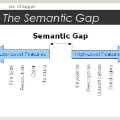The security and efficiency of modern computing systems are fundamentally undermined by the absence of a native architectural mechanism to propagate high-level program semantics, such as object identity, bounds, and lifetime, across the hardware/software interface. This paper presents a comprehensive survey of the architectural paradigm designed to bridge this semantic gap: descriptor-based, object-aware memory systems. By elevating the descriptor to a first-class architectural abstraction, this paradigm enables hardware to dynamically acquire and enforce the rich semantics of software-defined objects. This survey systematically charts the evolution and current landscape of this approach. We establish the foundational concepts of memory objects and descriptors and introduce a novel taxonomy of descriptor addressing modes, providing a structured framework for analyzing and comparing diverse implementations. Our unified analysis reveals how this paradigm holistically addresses the intertwined challenges of memory protection, management, and processing. As a culminating case study, we re-examine the CentroID model, demonstrating how its hybrid tagged-pointer encoding and descriptor processing mechanisms embody the path toward practical and efficient object-aware designs. Finally, we outline how the explicit cross-layer communication of object semantics provides a foundational research direction for next-generation cache hierarchies, unified virtual memory, and even 128-bit architectures.
翻译:现代计算系统的安全性与效率从根本上受到缺乏原生架构机制的制约,该机制旨在跨硬件/软件接口传播高级程序语义,如对象身份、边界和生命周期。本文全面综述了旨在弥合这一语义鸿沟的架构范式:基于描述符的对象感知内存系统。通过将描述符提升为一等架构抽象,该范式使硬件能够动态获取并强制执行软件定义对象的丰富语义。本综述系统梳理了该方法的演进历程与当前格局。我们确立了内存对象与描述符的基础概念,并引入了一种新颖的描述符寻址模式分类法,为分析和比较不同实现提供了结构化框架。我们的统一分析揭示了该范式如何整体应对内存保护、管理与处理等相互交织的挑战。作为总结性案例研究,我们重新审视了CentroID模型,论证其混合标记指针编码与描述符处理机制如何体现实现实用高效对象感知设计的路径。最后,我们概述了对象语义的显式跨层通信如何为下一代缓存层次结构、统一虚拟内存乃至128位架构奠定基础研究方向。















































































































































































































































































